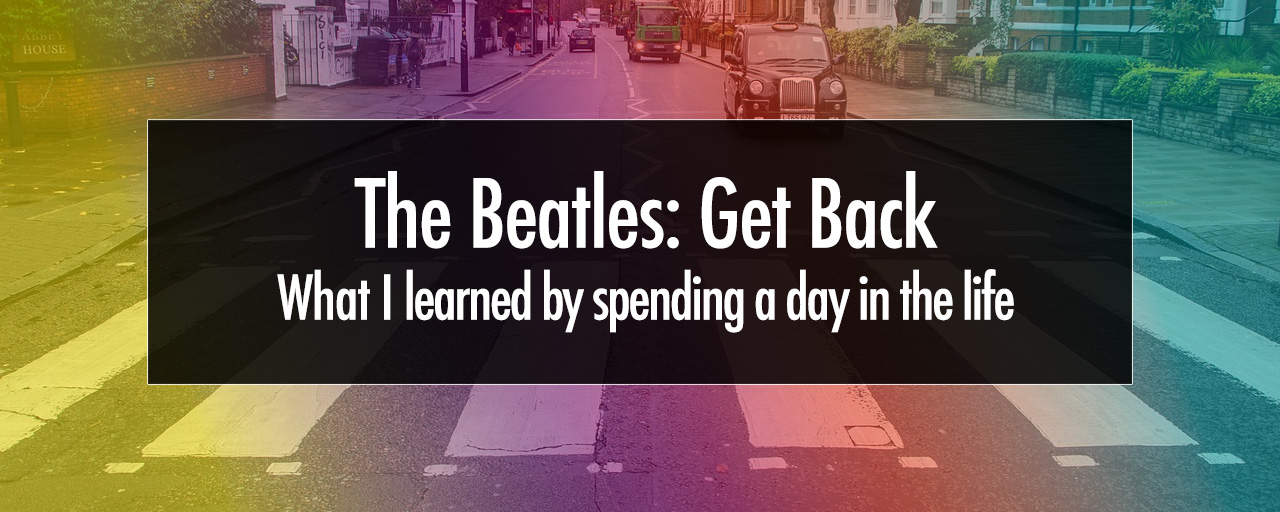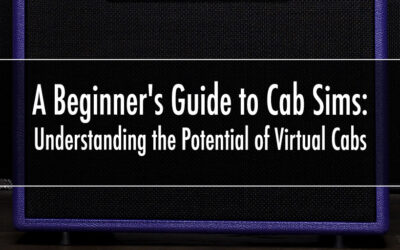
I will start off by assuming that you have heard that there is a new “docuseries” out about the Beatles currently streaming on Disney+. I could make various analogies about rocks caves and other generally mineral rich hiding places but I shall refrain. Peter Jackson (yes, he of the Middle Earth films and the infinitely superior “Bad Taste” and “Braindead” horrors) has released a lengthy “fly on the wall” series that is his best work to date. I’ve always loved this type of film – if you will, the ‘rocumentary’ (to paraphrase the great Marty Dibergi). I was always fascinated by the backstage glimpses – the banter, the mental preparation, the mess ups, the noodling, the environment. Ever since seeing two of D.A. Pennebaker’s classics as an impressionable kid, “Ziggy Stardust: The Motion Picture” and “Monterey Pop”, I have loved this style of film and there is no doubt the aforementioned Pennebaker was a master of the craft. I think the secret sauce lies amongst the brilliant contrast of an international act’s relatively pedestrian business life versus their glamorous onstage one. Let me also set my stall out by saying that whilst I am by no means a Beatles superfan, they have always been a part of my life – from my Dad probably being influenced by George Harrison and marrying my Indian mother (a bold move for an English chap in the 1960s) and some of my early musical memories, up to teenage friends who were obsessed, through to an adult appreciation. The Beatles have always been there for me, often on the sidelines but always present. It’s trendy to hate on the Beatles right now, and if that’s your thing, this film and this blog probably aren’t for you. If you are not in that camp, and you are a scholar of early Rock and Pop or have more than just a passing interest in music production, read on.
Jackson has taken the source material and firmly cast it into the 21st century with high definition production values and an 8+ hour epic that, were it a lesser series, would have bored any fly straight off the wall into the welcoming arms of death. He has scoured through some 160+ hours of Michael Lyndsay-Hogg’s original “Get Back Sessions” footage to put this film together – and boy did he put it together. Lyndsay-Hogg’s original film was considered somewhat dour, cynical even, but was saved by the music and was generally well-received. Jackson’s film is a different experience. The first part of the film starts with one of his well-practiced techniques: grainy footage and old black-and-white newsreels eventually melt away into a vivid extended range of colors and beautiful high resolution footage (cue the audience gasp). We are watching the Beatles and their entourage set up in 1969 at Twickenham Studios to record and plan an album and live performance, something that had not been witnessed for about 3 years. We are placed right in the center of the studio, as equipment is brought in and set up and the band take their initial positions. The first thing any gearhead would notice is that they had a very minimal setup: a few “Silverface” Fender amps, a wah pedal, a guitar or two each at most, Ringo’s kit (with a trusty “dishcloth” for a snare muffler), and a Blüthner grand piano.
As the setup continued apace, it became clear that their recording equipment was inadequate: they simply needed more tracks. Their initial solution was George’s own personal recorder, a huge unit that required its own van, but before long they were rigging up a new “portable” recording solution; splicing together two units after much boffin-related action. In a world where even the most basic recording DAW gives you 16 tracks instantly, it seems alien to consider these limitations. But, they were real, and they affected the recordings of that time and the thinking of any professional band. The notion of worrying about tape availability – let alone the actual practicalities of dealing with tape as a medium – is so far removed from the modern home recording musician with our parallel processing, multi-terabyte computers and advanced audio interfaces. Things were very different in the days of true analogue recording, and do-it-yourself ingenuity and lateral thinking were often the order of the day. It was this ingenuity that led to experimentation and greatness – something I worry I personally have lost with my music production efforts in the age of infinite digital possibilities. There was also a cautionary tale about electronics too, possibly about grounding your mics properly, as at one point they have a mic that shocks anyone that touches it after about 10 seconds of holding its metal guard, much to the amusement of the band. I know of 2 people that this has happened to and both now refuse to use anything other than wireless systems as a result. The Beatles on the other hand used the malfunction for japes. It is this sense of school boy humor that sort of draws us in closer to the band. We want so desperately to see the Fab Four in their pomp but something is definitely not right here and Jackson is slowly painting that picture for us.
The Beatles are jamming. It’s clear they are out of sorts, and John seems particularly affected shall we say, but there are fits and starts of brilliance. We hear a snippet of “Child of Nature / the Road to Rishikesh”- wrongly credited as road to marrakech – which eventually became “Jealous Guy”.The jamming becomes more fascinating and inspiring as it progresses. This is a band who at the peak of their early “Hamburg” days were taking “slimming pills” regularly so they could play 8 hour sets without dropping a note. Every day. Six days a week – although I’m led to believe it felt like Eight (see what I did there?). Now any band that plays that intensively together is going to develop mastery of their skills of course, but also in some instances, an almost telepathic skill with interpreting the musical direction and likes of your bandmates. That is never more obvious than when you see John and Paul’s knowing looks at each other. They’ve known each other from childhood, leading different lives but meeting and sharing a love of music. They are completely on the same wavelength musically sometimes, despite also being polar opposites occasionally, and when they bind their musical minds together it is pure magic. Anyone who watches this will get that same feeling. If ever there was a film that should serve as a “publicity film” for getting involved in playing in a band this might well be it. I’ve come away really wanting to work on another band project.
There are some fiery conversations between John and Paul, not with any real venom but definitely with meaning. Playing together seems awkward despite riffing some classics. Ringo looks on and says nothing. Then George gets upset at the direction this is all going. Ringo looks on and says nothing. Yoko Ono is present. She’s generally keeping to herself. Every now and then she interacts with John and we get the odd “off camera” stare from the rest of the gang, using the same comic timing as we expect from shows like “The Office”. George’s Hare Krisna friends seemingly multiply. Ringo looks on and says nothing. Equipment is moved, tinkered with. Songs are jammed. We hear them cover some of the classics of rock and roll, including Chuck Berry and Dylan. Ringo says nothing. George Harrison gets angry with how it is all going and ends up walking away in a gentlemanly quiet rage. Ringo may have said a few words about this bit.
Ringo has been the butt of many jokes for years. “He’s not even the best drummer in the Beatles” is the oft quoted Jasper Carott joke. Somehow this resonated throughout the years but of course it is not correct. Ringo owns every song he plays on. He may not fill every song with backbeats, triplet kickdrums, or manic rolls, as perhaps Baker, Bonham, and Moon would have, but he adds a unique musicality to all of his patterns. It’s laid back when it needs to be, but he is no slouch, and Ringo always has an ear for the melody. This is why he is a great drummer but the reason why he was also a great band mate is probably his relative calmness. Perhaps this also came from a previous enlightening experience with the aforementioned Mr. Zimmerman.
We are given a touching look at their respect for “Mr. Epstein” – their sorely missed manager who had died young – and left wondering what effect he must have had on the coherence and direction of this band. John is perpetually late and this is often depicted as a minor annoyance to the others, sometimes with comical results, but all is forgiven as they continually rip into fresh jams. We witness them sending up their contemporaries, and also themselves as they perform their own songs in the style of others, and we hear glimpses of brilliance as Paul noodles on the Blüthner. As the film passes from one part to another, and I become the only person in my household to still be in the marathon, we are presented with a hidden tape recorder conversation between Paul and John as they discuss the future of the project, the band, and the departure of George. You could hear that neither John or Paul felt comfortable talking, perhaps it was edited to sound awkward, and you wonder if it’s substance abuse, general masculinity, or something else that’s causing this jarringly weird conversational tone. Jaw dropping and fascinating in equal measure.
It isn’t all about Lennon and McCartney though of course. We have also met a whole host of supporting folk as I mentioned earlier, like Glyn Johns, George Martin, Alan Parsons, who all had so much to do with the sound the Beatles produced. We also meet their roadie Mal Evans, who never looked happier than when he was banging a hammer on an anvil in time, and of course various wives and girlfriends come and go – most notably Linda Eastman and the aforementioned Yoko Ono. One thing seems very apparent from this film. John loved Yoko. When he sings “Don’t Let me Down” at her, the emotion is raw, childlike, vulnerable. There has been a lot of “reappraisal” of John Lennon and he may have been considered problematic by our standards today had he made it out alive, but his art is undeniably powerful and that is all I am concerned with. Do I think Yoko split the Beatles up? No. I think the death of Brian Epstein had more to do with their trajectory and Yoko was merely a scapegoat. Yoko shouldn’t ever be let near an amplified mic though. That screaming is jarring. There is an amusing sequence where Linda’s daughter emulates Yoko screaming into the mic though – and probably does a better job of it musically.
George is convinced to rejoin the group and everyone breathes a sigh of relief. Eric Clapton gets a few name checks and it is clear he has impressed George. We hear George singing and then we start to look at his beautiful array of guitars. He has “Lucy” his Les Paul – which almost dies before our very eyes, the “Fool” painted Strat, and of course, the most gorgeous rosewood tele that he has become famous for. I like it a lot. We hear him play with a wah pedal and nobody is interested in recording “Maxwell’s Silver Hammer”.
The bits that made my hair stand on end the most were definitely the glimpses of Sir Paul McCartney as he composed songs on the Piano and developed their lyrics on the hoof. It’s stunning to see them start with “roughly the right sounding” words and then morph them into songs we know and love. “There’s the Mother Mary tune” he says about what became “Let it Be”. He sketches out “The Long and Winding Road” at the piano, singing and playing with absolute ease. He is on top form. A sublime bassist, an accomplished pianist, and a top class singer-songwriter. My appreciation for his talent intensified as I saw his creative process unfold. But also it was apparent he had a powerful vision, and nothing was going to get in his way.
Never underestimate the power of the funk to heal, and this is demonstrated with some style with Billy Preston’s arrival. He came in and added some very tasteful chops on the keys. He also added a new method for tuning the guitar. It’s easy to forget how something as workaday to us now as an electric tuner was unheard of then. Some of Billy’s licks are worth re-watching over and over again – such a natural talent and somehow fitting in perfectly. His very presence seems to focus the Fatigued Four and we now see a head of steam build. And how it builds. Within a few weeks they have gone from having virtually nothing to having written and rehearsed enough material for one complete album (“Let it Be”). We are also treated to snippets of tunes from “Abbey Road”. The hours pass by as we go from parts one to three in a day. It is utterly mesmerising and a delightful spectacle to boot. We eventually make it to the rooftop concert and we see the performance, the reaction and eventually the police intervention, and maybe also the end of the Beatles?
I had to shorten this blog considerably as at 8 hours+ of film, there is so much to chew over. I’m definitely going to be watching this again at Christmas as I’m sure there’s more to be had from this absolute love letter to Beatles fans. I praise Peter Jackson highly for this; no other film maker is doing what he does. As a piece of art alone this film is definitely worthy. It is also an experience like no other. After watching it I felt a sense of grief again for John and George. I felt like I had just spent a day in the studios with them and it was a privilege from start to finish.
But if I had to boil it into 5 TL:DR points they would be:
1. Listen to all of your contemporaries and learn how they play by playing their music yourself, over and over, preferably with some good mates
2. Love music but work hard at it 8 hours a day, 6 days a week, until you are good enough to do it without needing to hear yourself over your own PA
3. You don’t need loads of gear but the right gear is essential – Necessity truly is the mother of invention but also I now want a Bass VI and an Epiphone Casino
4. All you need is love… but some talent will help too, and maybe a drummer who has ridiculous levels of chill
5. If all else fails, find the funk – because funk is its own reward.



Great read, but Bass IV? Oops, typo! I’m sure. LOL
Ha! Good spot…it’s been a long day ????
Fixed!
I thought it was a mistake too, but later, maybe episode three, Lennon himself refers to “Road to Marrakech” as being a possible track. Seems the title went through some changes. Still, that shot early in episode one was my first OMG moment: OMG, there he is, just standing around, playing Child of Nature. wow.
Yeah you make a good point Phil, I overlooked that very salient fact! Names were very fluid as you say
Brilliant blog mate, very well written and spot on in all areas. I’m nearing the end of the second episode and I can’t believe just how good it is. I know a few people who like the Beatles and I feel compelled to round them up and make them sit and watch this series. Like you, I’m not a massive Beatles fan by any stretch but I’ve always appreciated their music. As you know, I’m not a musician and can’t play any instrument but what I’ve watched so far has really made me long to learn something. I’ve had an acoustic guitar since I was about 8, I once played in a live performance in a theatre in mu guitar class and I just played the same note for the whole song! Anyway, about 7 or 8 years ago I fitted new machine heads (and strings obvs.) with the intention of learning to play but never really got anywhere. Anyway, to cut a short story long, I might just have to dig out the guitar again and take some lessons!
Thanks Lonny!
George’s Strat is named Rocky. The Fool was the artist who painted Apple Boutique in psychedelic and they were forced to paint over it and Eric Clapton’s Gibson SG from the Cream days was known as The Fool as it was painted psychedelic as well
Ooh thanks for the info – the Fool also did the cover for The 5000 Spirits or the Layers of the Onion by the incredible String Band – I knew there was a connection I wasn’t making – Richard